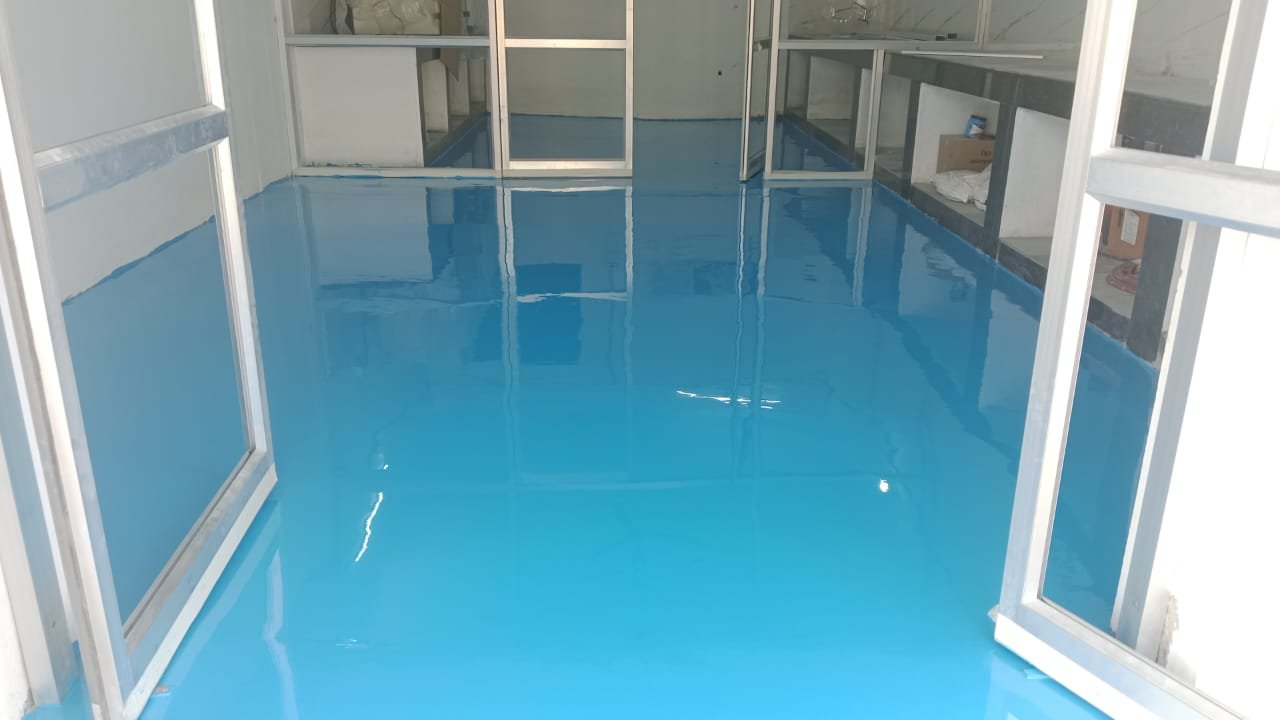HOW
THE EPOXY FOORING IS DONE ?
INTRODUCTION
Epoxy flooring refers to a type of flooring system that utilizes epoxy
resins to create a durable and chemically resistant surface. Epoxy is a
thermosetting polymer that, when mixed with a hardener, undergoes a chemical
reaction resulting in a rigid, plastic-like material. This material adheres
well to various substrates, making it a popular choice for a wide range of
applications in residential, commercial, and industrial settings.
PROCESS OF INSTALLING EPOXY
FLOORING
Installing epoxy flooring is a multi-step process that requires careful preparation and attention to detail. Here’s a general guide on how to install epoxy flooring:
Surface Preparation:
Clean the floor thoroughly by removing any dirt, dust, oil, or grease.
Sweep and mop the surface.
Use a floor grinder or shot
blaster to roughen the surface for better epoxy adhesion.
Repair any cracks or
imperfections in the concrete using an appropriate crack filler.
Etching:
If your concrete floor is smooth, apply a concrete etching solution
according to the manufacturer’s instructions.
Rinse the floor thoroughly to remove any residue from the etching
process.
Priming:
Apply an epoxy primer to the floor using a roller or brush. Follow the
manufacturer’s guidelines for the specific primer you are using.
Allow the primer to dry completely before proceeding.
Mixing Epoxy:
Mix the epoxy resin and hardener according to the manufacturer’s
instructions. Ensure thorough mixing to achieve a consistent product.
Application:
Start applying the mixed epoxy on the floor using a roller or brush
along the edges and corners.
Use a squeegee to spread the epoxy evenly over the larger surface areas.
Work in small sections to prevent the epoxy from drying before you can spread
it.
If desired, add a non-slip additive to the epoxy for safety.
Drying and Curing:
Allow the epoxy to dry according to the manufacturer’s recommendations.
This typically involves both drying and curing times.
Ensure the area is well-ventilated during the drying and curing process.
Second Coat (Optional):
Depending on the epoxy product used, you may need to apply a second
coat. Follow the manufacturer’s recommendations for the specific product.
Final Touches:
Remove any painter’s tape from
the edges.
Clean up tools and equipment
immediately after use.
It is important to note that the specific steps and products used may
vary depending on the manufacturer’s recommendations and the type of epoxy
flooring system chosen. Additionally, proper safety measures, including the use
of personal protective equipment, ventilation, and adherence to local regulations,
should be followed during the installation process.
CONCLUSION
The installation of epoxy flooring involves a multi-step process that
requires careful planning, proper surface preparation, and precise application.
A well-executed epoxy flooring installation can result in a long-lasting,
visually appealing, and functional floor surface suitable for a variety of
applications.






